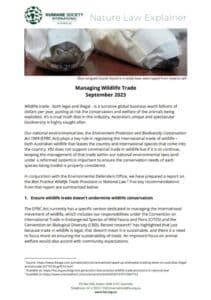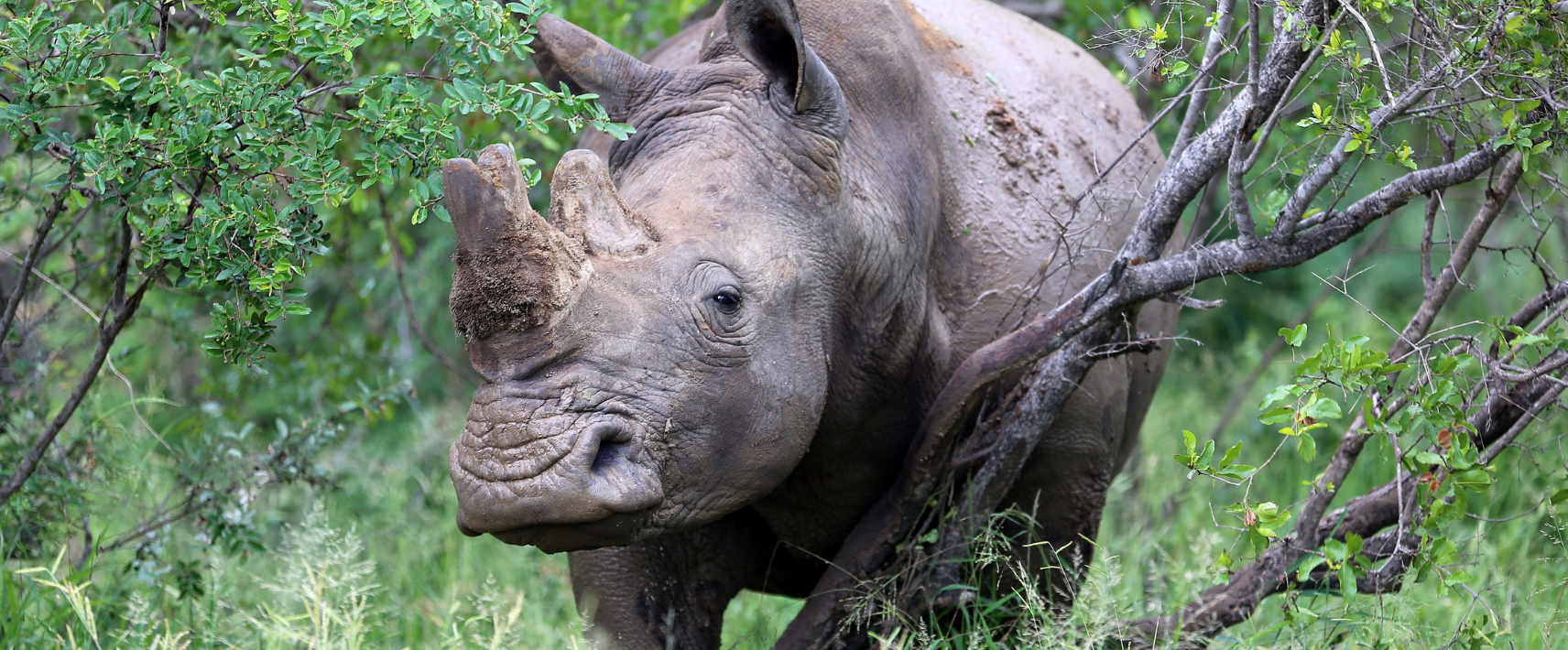One of the most important global meetings on wildlife trade has just wrapped up in Uzbekistan. It’s capital city Samarkand was where governments convened for the 20th Conference of the Parties (CoP20) to the Convention on International Trade in Endangered Species of Wild Fauna and Flora (CITES) to decide how international trade should be managed for some of the world’s most threatened...
Image Credit: The Age 2017
Wildlife trade – both legal and illegal – is a lucrative global business worth billions of dollars per year, putting at risk the conservation and welfare of the animals being exploited. It’s a cruel truth that in this industry, Australia’s unique and spectacular biodiversity is highly sought after.
Our national environmental law, the Environment Protection and Biodiversity Conservation Act 1999 (EPBC Act) plays a key role in regulating the international trade of wildlife – both Australian wildlife that leaves the country and international species that come into the country. HSI does not support commercial trade in wildlife but if it is to continue, keeping the management of that trade within our national environmental laws (and under a reformed system) is important to ensure the conservation needs of each species being traded is properly considered.
In conjunction with the Environmental Defenders Office, we have prepared a report on the ‘Best Practice Wildlife Trade Provisions in National Law’. Five key recommendations from that report are summarised below. Our wildlife trade laws are also important for strengthening fisheries management in Australia, but we’ll cover that in an upcoming Nature Law Explainer blog:
1.Ensure wildlife trade doesn’t undermine wildlife conservation
The EPBC Act currently has a specific section dedicated to managing the international movement of wildlife, which includes our responsibilities under the Convention on International Trade in Endangered Species of Wild Fauna and Flora (CITES) and the Convention on Biological Diversity (CBD). Recent research has highlighted that just because trade in wildlife is legal, that doesn’t mean it is sustainable, and there is a need to focus more on ensuring the sustainability of trade. An improved focus on animal welfare would also accord with community expectations.
The upcoming reforms provide an opportunity to strengthen wildlife trade provisions by requiring (at a minimum!) that decisions are consistent with our obligations under international treaties, as well as support international efforts to conserve and protect biodiversity. This includes ensuring the sustainability of any species permitted into Australia through trade. We also need to maintain the ability to provide stronger protection for our native species and internationally protected species than is required by international conventions.
Any commercial use of Australian wildlife must remain strictly limited (including a ban on trade in threatened and migratory species, and on the export of live native mammals, reptiles, birds and amphibians), and not unsustainably impact the species or its habitat. Any non-commercial trade should be limited to a small number of well-defined organisations and should only be allowed where it can demonstrate a conservation benefit for that species. We also need to ensure that anyone entrusted to trade in our native wildlife has demonstrated that they are an appropriate person to take on that responsibility, i.e. they are a ‘fit and proper’ person, and also that the trade itself must be required to be humane, with strong welfare requirements.
2. Implement a ban on importing hunting trophies
Trophy hunting involves the killing of wildlife purely for the purpose of displaying parts of the animal – often the head or skin. Trophy hunting affects many species including those threatened with extinction, such as the Hartmann’s mountain zebra and the giraffe. HSI Australia identified that Australia imported 827 trophies from 40 different species, including threatened species, during 2014-2018, despite the fact that the majority of the Australian public oppose trophy hunting. Read our full report on the appalling track record of trophies imported into Australia, here. The upcoming reforms provide the opportunity to ban the import of hunting trophies from CITES listed species.
3. Ensure live imports can’t become new pest species
We know that it is far more efficient and cost effective to prevent the introduction of new invasive species than to try to eradicate or manage them once they establish. We need stronger requirements to prevent the import of live organisms that could negatively impact our native plants and animals, and to maintain a clear list of species which can not be imported.
4. Improve transparency and accountability
To ensure that wildlife trade is meeting community expectations, our laws must require public consultation on all wildlife trade applications, including those by Australian zoos. There should also be a public register of all authorisations, which includes data showing the location and numbers of animals or plants caught or traded.
Better decisions are made when the community has the right to challenge poor decisions. While the community is currently able to challenge the validity of some decisions relating to wildlife trade under our national environmental laws, this doesn’t apply to all decisions. We need to ensure that the community has access to legal review of all decisions under the laws, on their merits, including those relating to wildlife trade.
The discovery of illegal wildlife trade has been hitting the news recently. Wildlife smuggling is often done under appalling conditions with many animals not surviving the experience. The reforms need to ensure government officials have access to best practice investigation and enforcement powers and that the penalties for illegal trade are large enough to act as a deterrent. This should be supported by allowing community members to conduct civil enforcement (that is enforce the laws independently of government) where needed.
5. Improve management of online wildlife trade
Online wildlife trade is significantly more common today than when the EPBC Act was introduced. Our national environmental laws need to be updated to reflect this by strengthening requirements for vendors and online sales platforms to provide proof of an item’s legality when offering it for sale on the internet and ensuring that law enforcement officers have the right tools and sufficient resources to be effective in this growing area. The laws must also ban live animal trade on the internet for native wildlife and other internationally protected species.
Where to from here?
Illegal and unsustainable wildlife trade is a major cause of the decline of wildlife across the globe. The upcoming law reforms provide the opportunity to ensure that Australia is doing its part to ensure that any trade in wildlife is strictly limited, legal, humane and sustainable.
Download a PDF version of this blog, so you can print and share with your Member of Parliament
Learn more about what we need to achieve stronger laws for Australian nature. Read our other Nature Law Explainer blogs:
- Community Rights in Decision Making
- Critical Habitat needs protection
- The importance of an “EPA”
- What are National Environmental Standards and why do we need them?
- Objects and Duties
- Strengthening Conservation Planning
- Climate change
- Nature Laws Explainer: Protecting Marine and Migratory Species
- Regional Planning
- What are biodiversity offsets? (Part 1)
- What are biodiversity offsets (Part 2)
- What ‘triggers the EPBC act?
- Strong nature laws shouldn’t be undermined by exemptions
- Environmental assessments and decision-making


